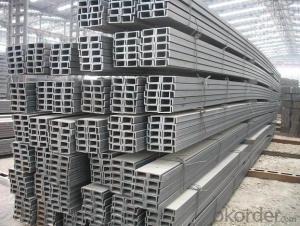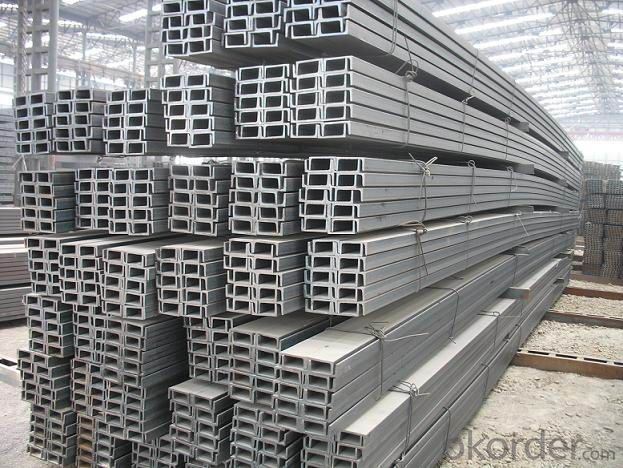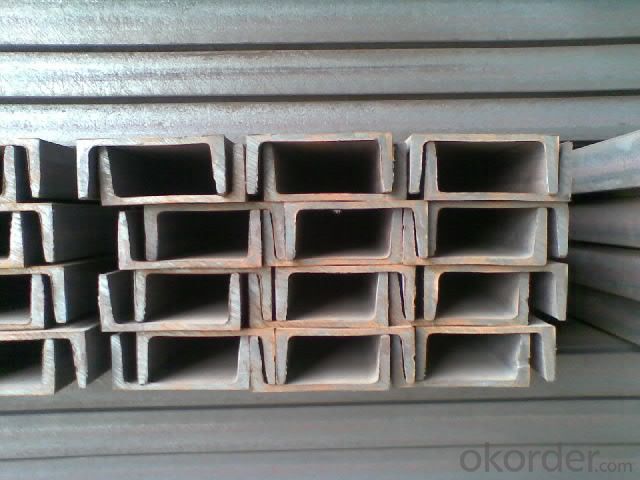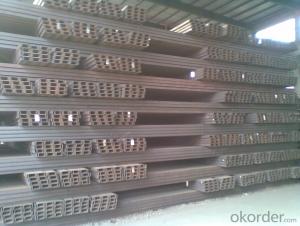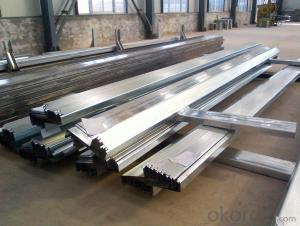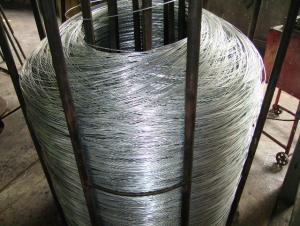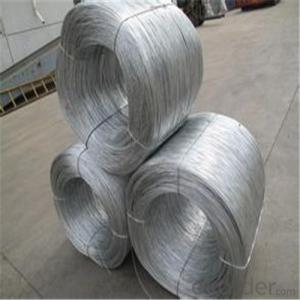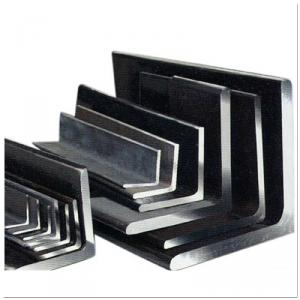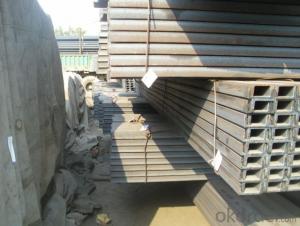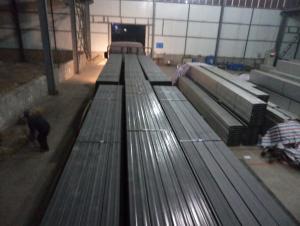Steel U Channel Steel Bar Hot Dip Galvanized
- Loading Port:
- Tianjin
- Payment Terms:
- TT or LC
- Min Order Qty:
- 24 m
- Supply Capability:
- 35000 m/month
OKorder Service Pledge
OKorder Financial Service
You Might Also Like
Product Description:
OKorder is offering Steel U Channel Steel Bar Hot Dip Galvanized at great prices with worldwide shipping. Our supplier is a world-class manufacturer of steel, with our products utilized the world over. OKorder annually supplies products to European, North American and Asian markets. We provide quotations within 24 hours of receiving an inquiry and guarantee competitive prices.
Product Applications:
Steel U Channel Steel Bar Hot Dip Galvanized are ideal for structural applications and are widely used in the construction of buildings and bridges, and the manufacturing, petrochemical, and transportation industries.
Product Advantages:
OKorder's Steel U Channel Steel Bar Hot Dip Galvanized are durable, strong, and resist corrosion.
Main Product Features:
· Premium quality
· Prompt delivery & seaworthy packing (30 days after receiving deposit)
· Corrosion resistance
· Can be recycled and reused
· Mill test certification
· Professional Service
· Competitive pricing
Product Specifications:
1.Good quality and competitive price.
2.Material: Q235, Q345, SS400, ASTM A36, S235JR, SS540
3. Length: 6m, 9m, 12m
4. Standard: ASTM JIS GB DIN
5. Application: construction, machine, vehicle, engineering, etc
6. Port of Loading: Tianjin
7. Delivery Time: 25 days after confirming your order
8. Packing: in bundle
Advantage:
(1). Design according to customers’ requirements
(2). Manufacture under complete quality control system---ISO9001:2008
(3). Installation with instruction of experienced engineers
(4). Easy to assemble and dismantle
(5). Eco-friendly material: can be used for several times and can be recycled
(6). Shorter construction period, longer using time
(7). High strength and stiffness, high weight bearing.
| JIS U CHANNEL | |||
| Standard Sectional | Web thickness (mm) | Flange thickness(mm) | Weight (kg/m) |
| Dimension (mm) | |||
| 50*25 | 3.00~5.00 | 6 | 2.37~3.46 |
| 75*40 | 3.8 | 7 | 5.3 |
| 75*40 | 4 | 7 | 5.6 |
| 75*40 | 4.5 | 7 | 5.85 |
| 75*40 | 5 | 7 | 6.92 |
| 100*50 | 3.8 | 6 | 7.3 |
| 100*50 | 4.2 | 6 | 8.03 |
| 100*50 | 4.5 | 7.5 | 8.97 |
| 100*50 | 5 | 7.5 | 9.36 |
| 125*65 | 5.2 | 6.8 | 11.66 |
| 125*65 | 5.3 | 6.8 | 12.17 |
| 125*65 | 5.5 | 8 | 12.91 |
| 125*65 | 6 | 8 | 13.4 |
| 150*75 | 5.5 | 7.3 | 14.66 |
| 150*75 | 5.7 | 10 | 16.71 |
| 150*75 | 6 | 10 | 17.9 |
| 150*75 | 6.5 | 10 | 18.6 |
| 200*80 | 7.5 | 11 | 24.6 |
| 250*90 | 9 | 13 | 34.6 |
| 300*90 | 9 | 13 | 38.1 |
FAQ:
Q1: Why buy Materials & Equipment from OKorder.com?
A1: All products offered byOKorder.com are carefully selected from China's most reliable manufacturing enterprises. Through its ISO certifications, OKorder.com adheres to the highest standards and a commitment to supply chain safety and customer satisfaction.
Q2: How do we guarantee the quality of our products?
A2: We have established an advanced quality management system which conducts strict quality tests at every step, from raw materials to the final product. At the same time, we provide extensive follow-up service assurances as required.
Q3: How soon can we receive the product after purchase?
A3: Within three days of placing an order, we will begin production. The specific shipping date is dependent upon international and government factors, but is typically 7 to 10 workdays.
Q4: What makes stainless steel stainless?
A4: Stainless steel must contain at least 10.5 % chromium. It is this element that reacts with the oxygen in the air to form a complex chrome-oxide surface layer that is invisible but strong enough to prevent further oxygen from "staining" (rusting) the surface. Higher levels of chromium and the addition of other alloying elements such as nickel and molybdenum enhance this surface layer and improve the corrosion resistance of the stainless material.
Q5: Can stainless steel rust?
A5: Stainless does not "rust" as you think of regular steel rusting with a red oxide on the surface that flakes off. If you see red rust it is probably due to some iron particles that have contaminated the surface of the stainless steel and it is these iron particles that are rusting. Look at the source of the rusting and see if you can remove it from the surface.
Images:
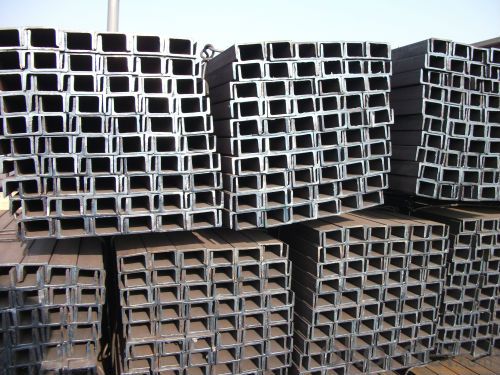
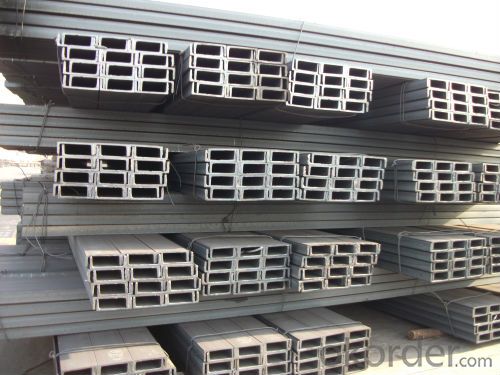
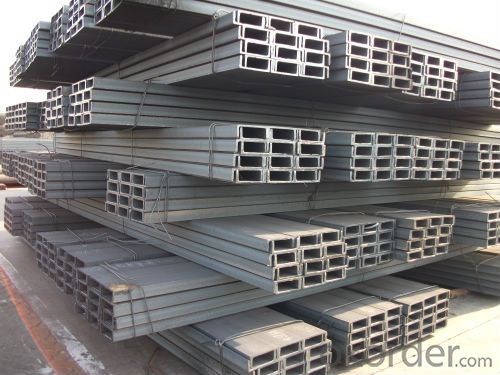
- Q: Can steel channels be used for marine applications?
- Yes, steel channels can be used for marine applications. Steel channels are versatile structural components that are commonly used in shipbuilding and other marine-related industries. They offer excellent strength and durability, making them suitable for various marine applications such as ship hulls, decks, bulkheads, and frames. The corrosion resistance of steel channels can be enhanced through the use of proper coatings and treatments, making them capable of withstanding harsh marine environments. Additionally, steel channels can be easily fabricated and welded to meet specific design requirements, making them a preferred choice in marine construction.
- Q: What are the different design codes for steel channels?
- There are several design codes that are commonly used for steel channels, including the American Institute of Steel Construction (AISC) Specification for Structural Steel Buildings, Eurocode, British Standards, and Canadian Standards. These codes provide guidelines and requirements for the design and construction of steel channels to ensure structural integrity and safety.
- Q: What are the different installation techniques for steel channels?
- There are several different installation techniques for steel channels, depending on the specific requirements and intended use of the channels. Here are a few common methods: 1. Welding: One common technique is to weld the steel channels to the supporting structure. This involves using a welding machine to melt the metal and create a strong bond between the channel and the structure. 2. Bolting: Another technique is to use bolts to secure the steel channels to the supporting structure. This method is often used when the channels need to be easily removable or adjustable. 3. Adhesive bonding: In some cases, adhesive bonding can be used to install steel channels. This involves using a strong adhesive to bond the channels to the supporting structure. Adhesive bonding can be a good option when welding or bolting is not feasible. 4. Mechanical fasteners: Steel channels can also be installed using mechanical fasteners such as screws, nails, or rivets. This method is typically used for lighter-duty applications or when a temporary installation is required. 5. Sliding or sliding-fit installation: For certain applications, steel channels can be installed by sliding them into pre-formed slots or grooves in the supporting structure. This method allows for easy installation and removal of the channels as needed. It is important to consider the specific requirements of the project, including load-bearing capacity, durability, and ease of installation, when choosing the most appropriate installation technique for steel channels. Consulting with a structural engineer or construction professional is recommended to ensure the proper installation method is chosen for the specific application.
- Q: Where does channel steel use more? Where does angle iron use more?
- The stainless steel angle can be made up of different stress components according to the different structure, and it can also be used as the connecting piece between the components. Widely used in a variety of architectural and engineering structures, such as beams, bridge [/url], transmission tower, lifting transport machinery, ships, industrial furnace, reaction tower, container rack and warehouse shelves.Stainless steel angle steel is constructed with carbon structural steel. It is a simple section steel. It is mainly used in the frame of metal component and workshop. In use, better weldability, plastic deformation and mechanical strength are required. The raw material for producing stainless steel angle steel is low carbon square billet, the finished product is made of stainless steel and the angle iron is delivered by hot rolling forming, normalizing or hot rolling.
- Q: Do steel channels have any specific thermal conductivity properties?
- Yes, steel channels do have specific thermal conductivity properties. Thermal conductivity refers to the ability of a material to conduct heat. Steel, being a good conductor of heat, has a relatively high thermal conductivity compared to other materials. This means that steel channels can efficiently transfer heat from one area to another. Consequently, steel channels are often used in applications where heat transfer is important, such as in the construction of HVAC systems, heat exchangers, and industrial machinery. Additionally, the specific thermal conductivity properties of steel channels can be influenced by factors such as the alloy composition, surface finish, and temperature.
- Q: What are the different methods of finishing steel channels?
- There are several methods of finishing steel channels, including painting, galvanizing, powder coating, and applying a protective coating or plating. Each method offers different benefits and is chosen based on the desired appearance, durability, and environmental considerations.
- Q: What are the maximum lengths available for steel channels?
- The maximum lengths available for steel channels can vary depending on the manufacturer and the specific type of channel being used. However, standard lengths typically range from 20 feet to 40 feet. Some manufacturers may offer longer lengths, such as 60 feet or more, depending on the requirements of the project and the capabilities of the manufacturer's equipment. It is important to consult with the manufacturer or supplier to determine the available lengths for the specific steel channel being considered for use.
- Q: Are steel channels suitable for mining and industrial applications?
- Steel channels are an excellent choice for mining and industrial applications. These structural elements are made of steel and possess exceptional strength and durability. This makes them perfect for heavy-duty tasks. In mining, steel channels are commonly used to construct support structures like roof supports, beams, and columns. They provide the necessary strength to withstand the extreme conditions, loads, and vibrations associated with mining operations. In industrial applications, steel channels are widely used for various purposes. They serve as support structures for heavy machinery and equipment, providing stability and rigidity. Steel channels also function as frames for conveyor systems, platforms, and walkways, ensuring safe and efficient movement within industrial facilities. Their versatility allows for customization and adaptation to specific requirements, making them an excellent choice for different industrial applications. Moreover, steel channels offer several advantages that make them suitable for mining and industrial applications. Firstly, steel is highly resistant to corrosion, which is crucial in environments where exposure to moisture, chemicals, and other harsh elements is common. This resistance ensures the longevity and reliability of the steel channels, reducing maintenance costs. Secondly, steel channels have excellent load-bearing capacity, allowing them to bear heavy loads and withstand significant forces. This is essential in mining and industrial settings, where heavy machinery, equipment, and materials are often involved. Lastly, steel channels are easy to fabricate and install, providing flexibility in design and construction. They come in various sizes, shapes, and lengths, allowing for customization to specific project requirements. Their easy installation also minimizes downtime during construction, ensuring efficient operations in mining and industrial applications. In conclusion, steel channels are highly suitable for mining and industrial applications due to their strength, durability, corrosion resistance, load-bearing capacity, and ease of fabrication and installation. They provide the necessary support and stability required in these demanding environments, making them a reliable choice for such applications.
- Q: Can steel channels be used for window and door frames?
- Certainly! Window and door frames can indeed utilize steel channels. With their strength and durability, steel channels offer ideal structural support for windows and doors. They not only bolster the stability and long-lasting nature of the frames but also fortify them against external forces like wind and impact. Furthermore, steel channels possess the flexibility to be tailored and manufactured to fit specific window and door dimensions. This adaptability renders them an excellent option for diverse architectural designs and applications.
- Q: Are steel channels available in pre-fabricated lengths?
- Yes, steel channels are available in pre-fabricated lengths. Steel channels are commonly used in construction and engineering projects, and they can be manufactured in various lengths to suit different applications. These pre-fabricated lengths make it easier for builders and contractors to work with the steel channels, as they can be easily transported and installed on-site. Additionally, pre-fabricated lengths help to ensure consistency in dimensions and quality, as they are produced in controlled environments using specialized equipment.
Send your message to us
Steel U Channel Steel Bar Hot Dip Galvanized
- Loading Port:
- Tianjin
- Payment Terms:
- TT or LC
- Min Order Qty:
- 24 m
- Supply Capability:
- 35000 m/month
OKorder Service Pledge
OKorder Financial Service
Similar products
Hot products
Hot Searches
Related keywords
